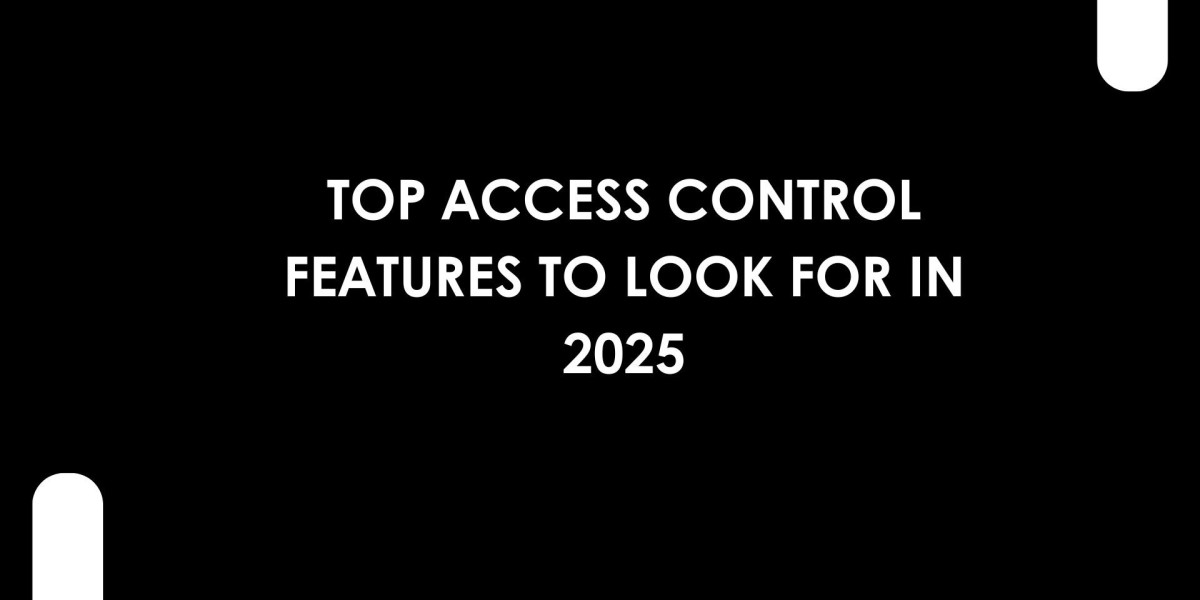As we step deeper into the era of smart buildings and digital security, access control systems are evolving rapidly. In 2025, organizations demand more than just locked doors and keycards. They want intelligent systems that integrate seamlessly, offer real-time control, and enhance user experience without compromising security.
At XTEN-AV, we are committed to helping AV professionals, consultants, and system designers stay ahead of these technology shifts. A modern Access Control System is no longer just about security. It is about access convenience, integration with other technologies, and scalable design that grows with your needs.
In this blog, we explore the top access control features to look for in 2025 so you can build a smarter, more secure environment that is ready for the future.
1. Mobile Credentialing
The era of physical badges and keycards is fading. In 2025, mobile access is the new standard. With mobile credentialing, users unlock doors using their smartphones via Bluetooth Low Energy or Near Field Communication.
This method is more secure, convenient, and cost-effective. There is no need to print or replace physical cards, and users are far less likely to forget their phones. A mobile-enabled Access Control System also supports remote credential activation and revocation in real time.
2. Biometric Integration
Biometric technology is more accurate, accessible, and affordable than ever. In 2025, facial recognition, fingerprint scanning, and even iris detection are becoming key components of next-gen access control.
Biometric verification provides an unmatched level of security because it uses unique physical traits that cannot be lost or duplicated. Many modern systems now combine biometrics with mobile access to enable dual-factor authentication for high-security zones.
3. Cloud-Based Management
Cloud platforms are transforming how access control is managed. Cloud-based systems offer flexibility, remote administration, faster updates, and scalability across multiple sites.
Administrators can grant or revoke access from anywhere, monitor real-time access logs, and receive system alerts instantly. A cloud-based Access Control System reduces the need for bulky onsite servers and lowers maintenance costs over time.
4. AI-Powered Analytics
Artificial Intelligence is reshaping the way access data is interpreted. In 2025, smart systems will use AI to identify access trends, detect unusual behavior, and improve overall decision-making.
AI algorithms can spot patterns like repeated failed access attempts or irregular usage times, alerting security teams in real time. This proactive approach reduces threats and enhances situational awareness.
5. Touchless Entry Technology
Touchless access is no longer just a convenience. It is now a necessity. Whether for hygiene, accessibility, or user experience, systems in 2025 must support contactless credentials and sensors.
Wave-to-unlock, gesture-based entry, QR code scanning, and facial recognition all reduce the need to physically interact with devices. These technologies create smoother user flows, especially in high-traffic areas like offices, hospitals, and educational institutions.
6. Real-Time Access Monitoring
Modern access control must do more than just allow or deny entry. Real-time monitoring helps organizations track who enters which area and when.
Live dashboards, event logs, and video integration offer complete situational visibility. In emergency situations, this real-time insight helps quickly locate personnel and take immediate action.
7. Integration with Video Surveillance
In 2025, integration is everything. Access control should work hand in hand with video surveillance, alarm systems, and building automation platforms.
Video integration allows operators to visually verify users as they enter and leave secured areas. Events such as forced entries or tailgating can trigger cameras to record or alert security staff. This combined approach strengthens overall security response.
8. Role-Based Access and Smart Scheduling
A robust Access Control System in 2025 should support role-based access and smart scheduling. Access permissions should be tied to job roles, departments, or locations, reducing the risk of unauthorized entry.
Smart scheduling ensures that users only have access during specific hours or days. This is especially useful in co-working spaces, schools, and shift-based industries.
9. Visitor and Temporary Access Management
Managing short-term or guest access has become a major requirement. In 2025, access control systems should support easy issuance of visitor credentials through mobile apps, QR codes, or temporary PINs.
This feature reduces front desk congestion, enhances security, and provides audit trails for every visitor entering the premises.
10. Emergency Lockdown and Safety Protocols
Modern threats demand quick response. A 2025-ready Access Control System should include emergency lockdown capabilities. In a crisis, administrators can lock down selected zones or the entire facility instantly.
These features must also comply with life safety codes, ensuring that emergency exits remain functional when needed. Integration with fire alarms and public announcement systems ensures coordinated responses during evacuations.
11. Audit Trails and Compliance Reporting
Compliance requirements continue to grow across industries. Systems in 2025 must include detailed audit trails and reporting tools to meet standards like HIPAA, GDPR, and ISO.
Being able to track every access event, generate automated reports, and show proof of security measures is now critical for legal and operational accountability.
12. Scalability and Customization
Future-proofing is essential. As businesses expand or restructure, your access control system should scale with ease.
Whether adding more users, locations, or devices, the system should allow flexible upgrades. Additionally, customization features like branded mobile apps, configurable access rules, and personalized user interfaces enhance user experience and brand identity.
Conclusion
The Access Control System of 2025 is smarter, faster, and more connected than ever before. It goes beyond traditional door security to offer mobile convenience, biometric precision, cloud flexibility, and AI-driven insights.
At XTEN-AV, we provide the tools and technology to help AV designers and integrators create cutting-edge security systems that meet the demands of tomorrow. By focusing on the top features outlined above, you can design access solutions that are secure, scalable, and future-ready.
As we move into a new era of connected buildings and hybrid workplaces, your access control system is not just about protection. It is about empowering safe, efficient, and intelligent environments for everyone who enters your space.
Read more: https://www.florevit.com/read-blog/39734








